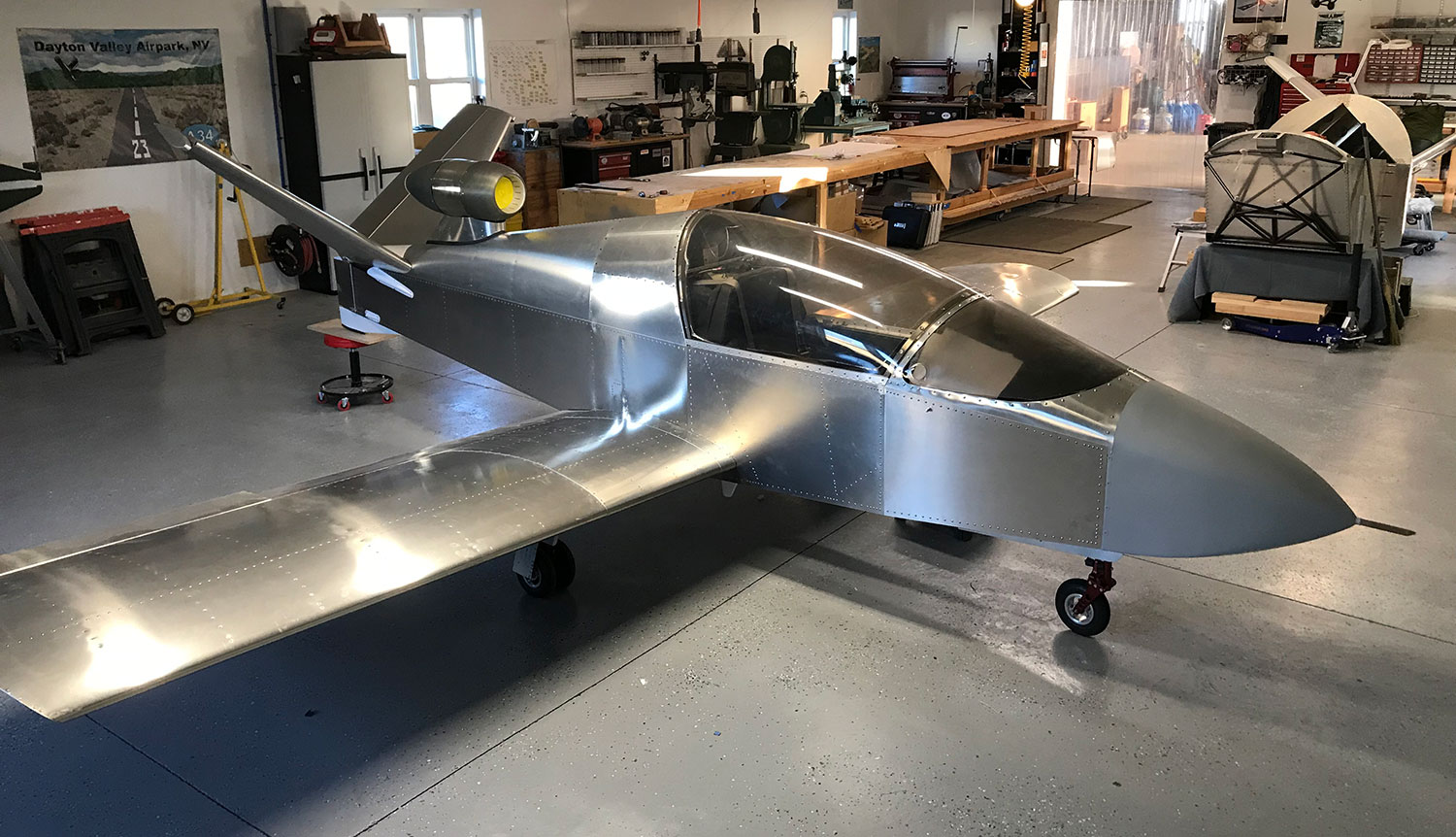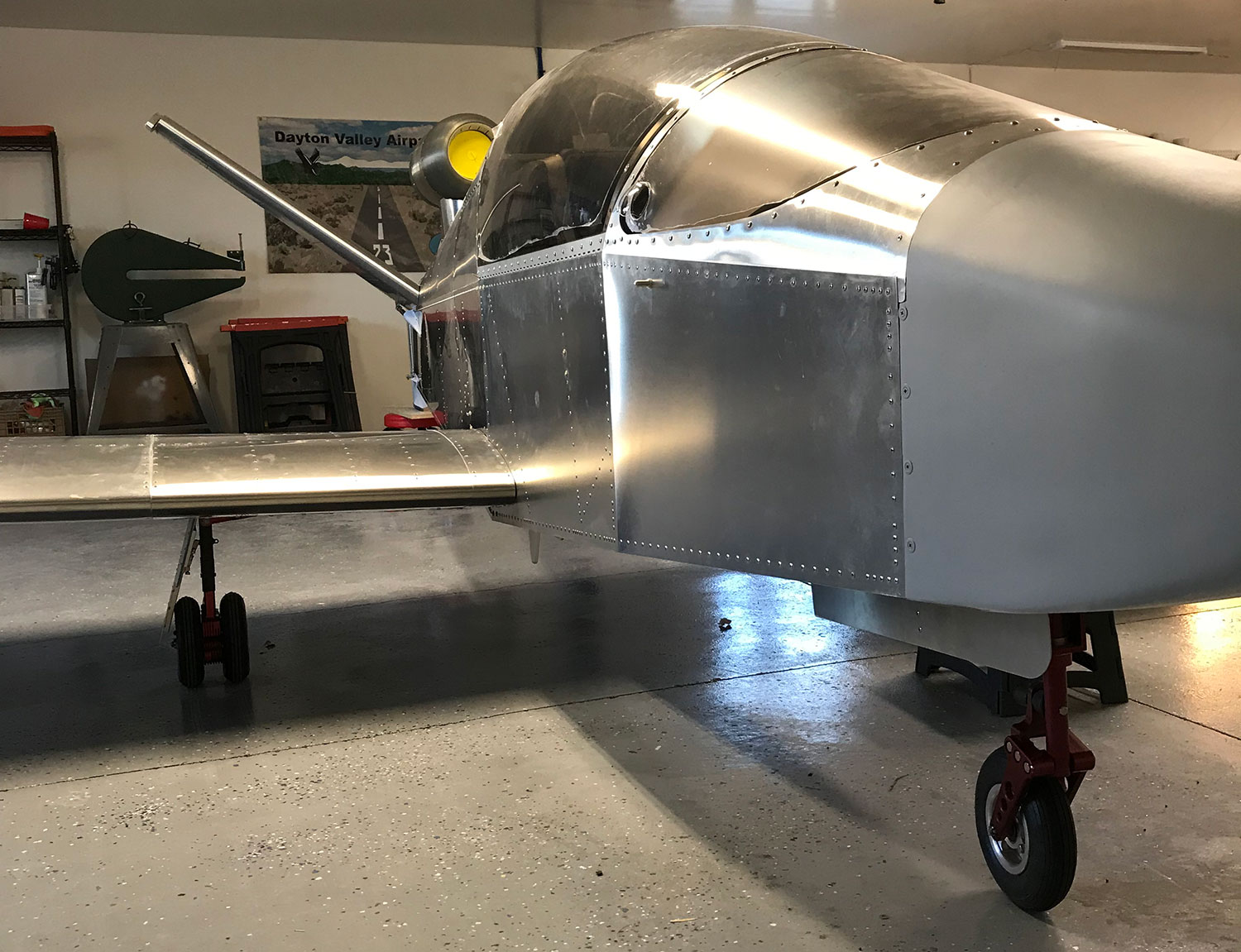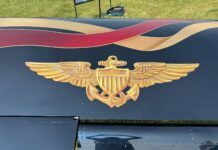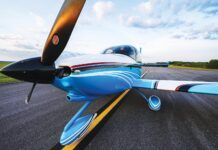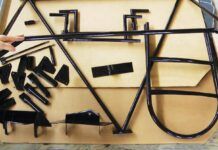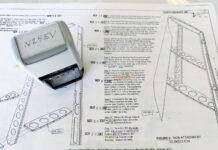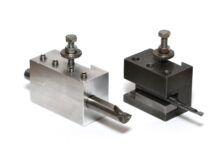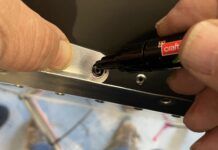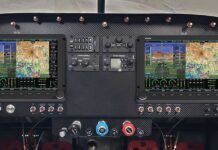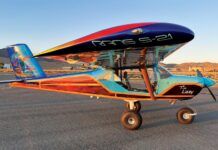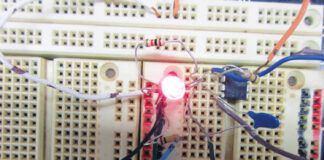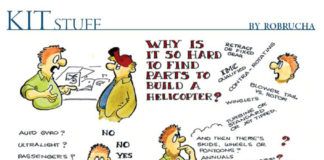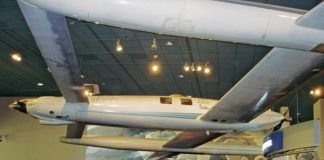With the first engine start and initial taxi testing out of the way (see and hear it below), the little jet is cocooned in the shop, awaiting the arrival of the paint master – John Stahr of Stahr Design, noted for airbrush work on aircraft large and small. And they don’t come much smaller than the SubSonex! After months of back and forth design work, we’ve settled on a concept that we like and John is enthusiastic about. Paint jobs are always a matter of taste, and trying to please every eye is impossible – but if you look back at the airplane as you leave the hangar saying “I still like that” years later, you know you’ve hit the mark.
I’ve participated for years in the never-ending debate about painting before or after the first flight, and there are good arguments for both sides. In the past, I have flown my airplanes first, knowing that there is always the possibility of needing to change the incidence on a stabilizer (which would require body work), or thinking that if I had to do some corrective work on a cowl or fairing, it would be harder to do if it was going to mess up fresh paint. On the side of painting first, well – airplanes are large enough that painting them in pieces can simplify things for someone doing it themselves. A lot depends on if you are going to have it done at a remote shop, or in your workshop – and in this case, we’re doing it at home, so we could have done it either way. The SubSonex is CAD designed and there is very little that can be adjusted – it should just fly right (or as right as the prototype, which flies nicely), and there no cowl adjustments for cooling to be made. These thoughts, the current weather and the schedule of the FAA inspector all combined to make painting first a viable option – so here we go!
You can follow along with the painting process here on the KITPLANES web site as we attempt to share the work with daily updates and maybe a little time-lapse photography (assuming that isn’t beyond the capabilities of a couple of sixty-something techies who still fondly remember their DOS commands). The SubSonex is smaller than most machines, and the time will go quickly as we transfer it from bare aluminum into something that – we hope – will be eye catching for years to come!

